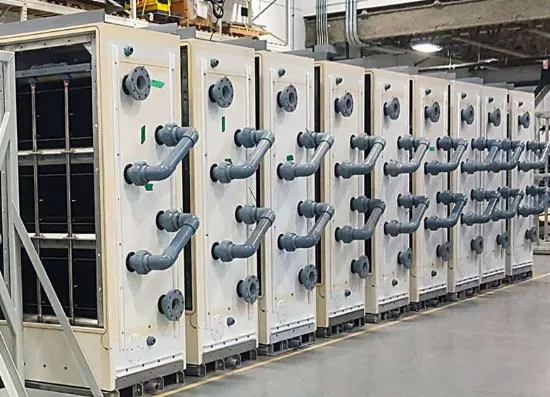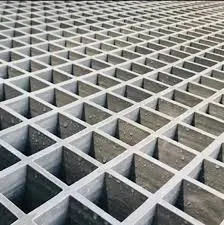
-
 Afrikaans
Afrikaans -
 Albanian
Albanian -
 Amharic
Amharic -
 Arabic
Arabic -
 Armenian
Armenian -
 Azerbaijani
Azerbaijani -
 Basque
Basque -
 Belarusian
Belarusian -
 Bengali
Bengali -
 Bosnian
Bosnian -
 Bulgarian
Bulgarian -
 Catalan
Catalan -
 Cebuano
Cebuano -
 China
China -
 China (Taiwan)
China (Taiwan) -
 Corsican
Corsican -
 Croatian
Croatian -
 Czech
Czech -
 Danish
Danish -
 Dutch
Dutch -
 English
English -
 Esperanto
Esperanto -
 Estonian
Estonian -
 Finnish
Finnish -
 French
French -
 Frisian
Frisian -
 Galician
Galician -
 Georgian
Georgian -
 German
German -
 Greek
Greek -
 Gujarati
Gujarati -
 Haitian Creole
Haitian Creole -
 hausa
hausa -
 hawaiian
hawaiian -
 Hebrew
Hebrew -
 Hindi
Hindi -
 Miao
Miao -
 Hungarian
Hungarian -
 Icelandic
Icelandic -
 igbo
igbo -
 Indonesian
Indonesian -
 irish
irish -
 Italian
Italian -
 Japanese
Japanese -
 Javanese
Javanese -
 Kannada
Kannada -
 kazakh
kazakh -
 Khmer
Khmer -
 Rwandese
Rwandese -
 Korean
Korean -
 Kurdish
Kurdish -
 Kyrgyz
Kyrgyz -
 Lao
Lao -
 Latin
Latin -
 Latvian
Latvian -
 Lithuanian
Lithuanian -
 Luxembourgish
Luxembourgish -
 Macedonian
Macedonian -
 Malgashi
Malgashi -
 Malay
Malay -
 Malayalam
Malayalam -
 Maltese
Maltese -
 Maori
Maori -
 Marathi
Marathi -
 Mongolian
Mongolian -
 Myanmar
Myanmar -
 Nepali
Nepali -
 Norwegian
Norwegian -
 Norwegian
Norwegian -
 Occitan
Occitan -
 Pashto
Pashto -
 Persian
Persian -
 Polish
Polish -
 Portuguese
Portuguese -
 Punjabi
Punjabi -
 Romanian
Romanian -
 Russian
Russian -
 Samoan
Samoan -
 Scottish Gaelic
Scottish Gaelic -
 Serbian
Serbian -
 Sesotho
Sesotho -
 Shona
Shona -
 Sindhi
Sindhi -
 Sinhala
Sinhala -
 Slovak
Slovak -
 Slovenian
Slovenian -
 Somali
Somali -
 Spanish
Spanish -
 Sundanese
Sundanese -
 Swahili
Swahili -
 Swedish
Swedish -
 Tagalog
Tagalog -
 Tajik
Tajik -
 Tamil
Tamil -
 Tatar
Tatar -
 Telugu
Telugu -
 Thai
Thai -
 Turkish
Turkish -
 Turkmen
Turkmen -
 Ukrainian
Ukrainian -
 Urdu
Urdu -
 Uighur
Uighur -
 Uzbek
Uzbek -
 Vietnamese
Vietnamese -
 Welsh
Welsh -
 Bantu
Bantu -
 Yiddish
Yiddish -
 Yoruba
Yoruba -
 Zulu
Zulu
Car and Boat Body
Fiberglass Reinforced Plastic (FRP) covers have garnered significant attention in diverse industries. Their adoption is driven by specific advantages that align well with contemporary needs in construction, water treatment, and safety applications. Understanding the multifaceted benefits and applications not only highlights their effectiveness but also demonstrates their superiority compared to traditional materials.

One standout attribute of FRP covers is their unparalleled strength-to-weight ratio. Unlike metal or wood, FRP covers offer exceptional durability without the burden of excessive weight. This characteristic facilitates ease of installation and maintenance, particularly in challenging environments such as wastewater treatment plants or chemical processing facilities. Industry experts often cite case studies showcasing FRP covers' performance in harsh climates, where traditional materials falter due to corrosion or weight limitations.
Moreover, the corrosion resistance of FRP covers cannot be overstated. In environments exposed to chemicals, moisture, and extreme temperatures, corrosion can compromise safety and structural integrity. FRP's inherent resistance to such conditions ensures long-term performance with minimal deterioration. This quality is particularly prized in marine environments and chemical industries, where the constant presence of corrosive substances demands materials that can withstand relentless exposure without degradation.

Expert analysis frequently highlights the cost efficiency associated with FRP covers. While the initial investment might be higher compared to some traditional materials, the long-term savings are substantial. The reduced need for frequent replacements or maintenance, coupled with FRP's longevity, results in significant lifecycle cost reductions. Companies investing in FRP solutions often report a return on investment through decreased operational costs and enhanced productivity.
frp cover
In terms of adaptability, FRP covers set the standard in versatile design. Manufacturers can customize FRP covers to meet specific technical requirements or aesthetic preferences. This versatility extends to color, shape, and size, allowing seamless integration into existing infrastructures or new projects. Industry authorities stress the importance of customization in ensuring that systems function optimally while complying with aesthetic or spatial constraints without compromise.
The non-conductive nature of FRP materials is another crucial advantage, especially in applications where electrical safety is paramount. Traditional metal covers can pose risks of electrical conductivity, potentially leading to hazardous situations. In contrast, FRP offers a safe alternative, making it the material of choice in power stations and facilities with stringent safety regulations.
Moreover, environmentally conscious organizations gravitate towards FRP covers due to their sustainability profile. As industries pivot towards greener practices, the reduced environmental impact of FRP – especially in terms of recyclability and non-toxic production – aligns with the ethos of sustainability. Recognized authorities in environmental science reaffirm the benefits of shifting towards materials like FRP in reducing carbon footprints and promoting ecological balance.
In conclusion, the adoption of FRP covers in diverse industries is supported by substantial evidence and expert endorsement. Their exceptional properties, ranging from strength and corrosion resistance to cost efficiency and adaptability, establish FRP as a leader in material innovation. As industries continue to evolve, the wisdom of investing in FRP solutions becomes increasingly clear, reaffirming the material's role as a cornerstone in future-oriented infrastructure development. Through verified performance and expert testimonials, FRP covers prove to be not just an alternative, but frequently the preferred solution, meeting the rigorous demands of modern industry standards.
Latest news
-
Exploring the Benefits of Top Hammer Drifter Rods for Enhanced Drilling PerformanceNewsJun.10,2025
-
High-Precision Fiberglass Winding Machine for GRP/FRP Pipe Production – Reliable & Efficient SolutionsNewsJun.10,2025
-
FRP Pipes & Fittings for Shipbuilding - Corrosion-Resistant & LightweightNewsJun.09,2025
-
Premium FRP Flooring Solutions Durable & Slip-ResistantNewsJun.09,2025
-
Premium Fiberglass Rectangular Tanks Durable & Lightweight SolutionNewsJun.09,2025
-
Tapered Drill String Design Guide Durable Performance & UsesNewsJun.09,2025









